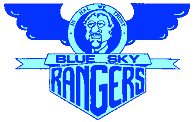Pole Position®

INTELLIVISION CARTRIDGE [INTV #9004]
Release 1988
Based on the arcade game by Namco
Produced by Realtime Associates for INTV Corporation
Design/Program: Marc Urbaniec
Graphics: Connie Goldman
Sound: David Warhol
Package Illustration: Danny Brauer


DEVELOPMENT HISTORY
INTV Corporation had the chance to license the popular arcade game Pole Position and asked Dave Warhol if it could be converted to the Intellivision. While the Intellivision is technologically not well suited to a point-of-view driving game, Dave did some experiments and determined that it could be done.
Former Mattel Electronics manager Mark Urbaniec (Vectron) was approached to do the programming. His first reaction was "Pole Position? On the Intellivision? You're crazy." But, seeing the tests Dave had done, agreed to try it. The result was an acceptable translation of the arcade game, but in hindsight everyone agreed that it was a game that probably shouldn't have been attempted for Intellivision.
(An earlier unfinished attempt at Pole Position had been made at Atarisoft; none of that code was used in this version.)
